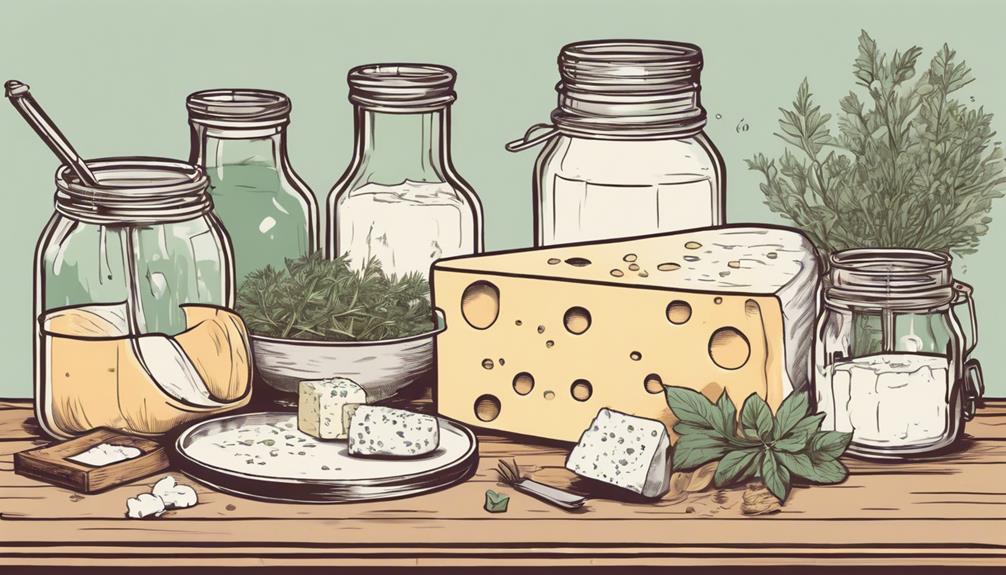How To Become More Self-Sufficient Without Starting a Full-Blown Farm…
Want to start preserving your harvest, making your own soap, or building a backyard root cellar — but not sure where to begin? “Homesteading Advice” gives you instant lifetime access to 35+ practical homesteading books on food preservation, veggie gardening, DIY natural cleaning products (save over $250 per year with this skill alone), brewing, off-grid energy, and a whole lot more…
Click Here To Check It Out Now!
“Hey there, I’m attempting to improve the consistency of the cheese made in my small dairy operation. Recently, I’ve been reading up on using the flocculation method for testing coagulation to get better control over my curd quality. Could you explain in detail how this method works, what tools I need, and any tips for getting the best results? Thanks,” Megan, Walla Walla, USA.
What’s The Flocculation Method For Testing Coagulation?
Hey Megan! It’s great to hear you’re diving deep into the cheese-making process. The flocculation method is quite a handy tool for achieving the consistent quality you’re after. It provides a practical way to measure the exact minute when milk coagulates, helping control the texture and moisture of your cheese.
Understanding Flocculation
First off, let’s clarify what flocculation involves. In cheese making, flocculation refers to the process where milk begins to visibly coagulate or clump together after the addition of rennet. By accurately timing this, you can precisely determine when to cut the curd, which directly impacts the final texture and quality of your cheese.
Why Flocculation Time Matters
Monitoring the flocculation time isn’t just a meticulous detail; it’s crucial for several reasons:
- Curd Strength: Coagulum strength affects the moisture content and elasticity of the curd.
- Consistency: Ensures that each batch of cheese has a consistent texture and flavor.
- Efficiency: Reduces waste by avoiding over-setting or under-setting of the curd.
Tools You’ll Need
Getting started with the flocculation method is relatively straightforward. Here’s what you’ll need:
- Rennet: An enzyme used to coagulate milk.
- Stirring Rod or Spoon
- Timer or Stopwatch: Precision is key here.
- Milk: Obviously! Fresh, high-quality milk will give the best results.
- Lightweight, Clean Container or Lid: This will float on the surface of the milk.
The Flocculation Testing Process
Now, let’s run through the steps for using the flocculation method:
- Add Rennet: Pour the rennet into the milk as directed by your recipe, and stir gently for about one minute to ensure it’s well distributed.
- Set Up: Place the lightweight container or lid on the surface of the milk. This floating device helps indicate coagulation visually.
- Start the Timer: As soon as the rennet is added, start your timer.
- Observe: You’ll need to frequently check the motion of the floating device. At first, it will move freely on the surface. As the milk begins to coagulate, resistance will start to form and movement will slow.
- Measure Flocculation Time: As soon as you see the floating device beginning to settle and show resistance (it won’t move as freely), stop the timer. This is your flocculation time.
Determining Cut Time
Flocculation time determines your cut time, which is typically 2.5 to 3 times your flocculation time. Here’s how you can calculate it:
- If your flocculation time is 10 minutes, your cut time would be between 25 to 30 minutes.
This window allows the curd to achieve the right consistency for cutting, ensuring that the whey expulsion is controlled, leading to a better texture.
Common Mistakes and Tips
Even seasoned cheesemakers can run into a few hiccups with flocculation. Here are some common issues and tips to help you avoid them:
- Inconsistent Milk Temperature: Ensure that your milk is at a consistent temperature (usually around 86°F or 30°C). Fluctuations can lead to inconsistent coagulation.
- Incorrect Rennet Dosage: Too much or too little rennet can skew your flocculation time. Stick to the prescribed amount.
- Timing: Use a reliable timer. Precision is key to achieving good results consistently.
Example Scenario
Let’s put this into a practical example. Say you have a flocculation time of 12 minutes:
- Multiply by 2.5 to 3: Your cut time will be 30 to 36 minutes.
- During this window, check your curd for firmness before cutting.
This method ensures that your curd is at its optimum cutting stage, giving your cheese the right texture and moisture balance.
Adjustments for Different Cheeses
Different types of cheese might require adjustments to the flocculation multiplier:
- Soft Cheeses: Use a lower multiplier (around 2.5) for a softer curd.
- Hard Cheeses: Harder cheeses, needing a firmer curd, may use a higher multiplier (around 3).
Why Use Flocculation Method Over Fixed Time?
It’s often tempting to stick to fixed time guidelines for coagulation, but flocculation offers a more refined approach:
- Milk Variability: Factors like seasonal changes, animal diet, and milk quality can influence coagulation time.
- Precision: Flocculation accounts for these variables, giving a more precise cut time.
- Consistency: Results in more consistent cheese batches over time.
Final Thoughts…
Megan, thanks for bringing up such a thoughtful question about the flocculation method. It’s an incredibly effective tool once you get the hang of it, ensuring your cheese-making process becomes more precise and your results more consistent. Just remember, practice makes perfect! Happy cheese making!

